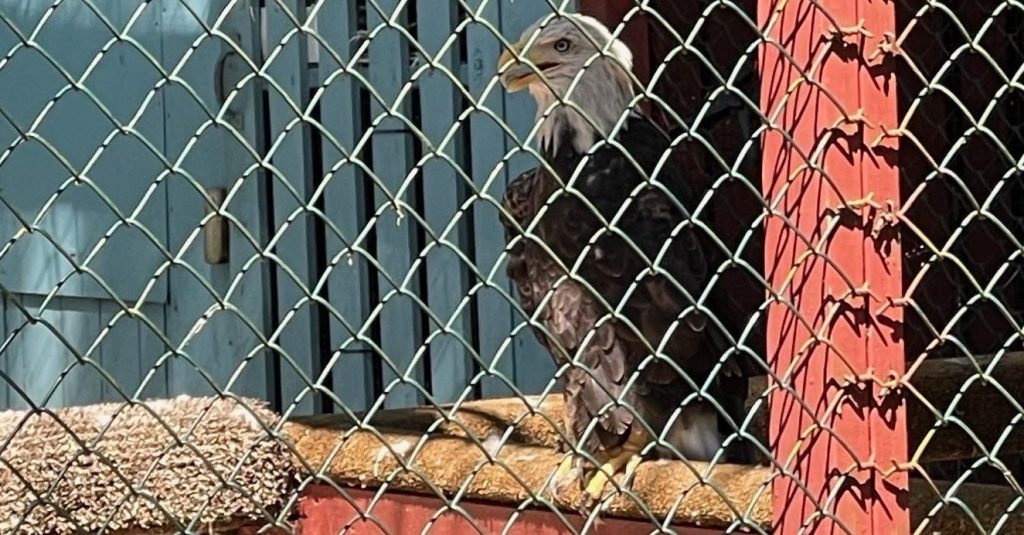
bird-watched; bird-watching; bird-watches (intransitive verb), is the observation of live birds in their natural habitat, a popular pastime and scientific sport that developed almost entirely in the 20th century. In the 19th century, almost all students of birds used guns and could identify an unfamiliar species only when its corpse was in their hands. Modern bird-watching was made possible largely by the development of optical aids, particularly binoculars, which enabled people to see and study wild birds, without harming them, better than ever before.
I am not a bird-watcher. However, this past week The Pear Tree Project was in need of clemency, exhalation, and unity.
Where did the desire for these merciful requirements lead us, well, oddly enough to our feathered friends.
A “raptor” is a bird of prey.
The Raptor Trust envisions a world where animals and the environment are not harmed by human activity, unless accidentally, at which time people should do all in their power to heal and correct the harm.
The Raptor Trust is a result of one man’s long-time interest in nature and, particularly, birds of prey. Len Soucy first became interested in hawks after a visit to Hawk Mountain Sanctuary in Kempton, Pennsylvania, in the fall of 1964. From that time on he had a passionate concern for the well-being of raptors. His concern was well founded, for prior to the passage of the Federal Migratory Bird Treaty Act in 1972, there was no legal protection for hawks and owls. In the ecological “dark ages,” raptors (and most other predators) were viewed as vermin, bad and vicious killers, and they were regularly destroyed with impunity.
Many states, including New Jersey, actually placed bounties on some birds of prey. And although there were many raptor advocates like Soucy, there were precious few people, and almost no facilities, that provided care to injured and orphaned predatory birds. In 1968, Soucy bought a home on 14 acres of property in Millington, N.J.
With the help and support of his wife Diane and son Chris, he began to care for injured raptors, part time, in their backyard. At first, the case load was small, but as their work became better known, the number of birds brought to their backyard bird hospital grew dramatically each year. By the end of the 1970s hundreds of birds of all kinds, not just raptors, were being admitted annually. Aviaries were constantly being built and the facility expanded to house the burgeoning avian population. Throughout those years, all the work was done by the Soucys and a few dedicated volunteers. It was financed totally by Len and Diane.
By the early 1980s, the project had become so large and expensive that they could no longer afford to finance it alone. In 1982, the operation was named The Raptor Trust and established as a non-profit corporation in the state of New Jersey. The following year TRT was granted tax-exempt status by the Internal Revenue Service. Funds could now be solicited and received from corporations, foundations, and private donors to help meet financial needs.
The Raptor Trust is a not-for-profit organization that helps injured birds of prey. TRT is one of the premier wild bird rehabilitation centers in the United States. Located in Millington, New Jersey, it includes a hospital with state-of-the-art medical facilities, quality exterior housing for several hundred birds, and an education building. A stalwart advocate for wild birds for over four decades, TRT is recognized as a national leader in the fields of raptor conservation and avian rehabilitation.
The Mission
1. Provide free care and assistance to injured, sick, or orphaned wild birds.
TRT is a fully equipped medical infirmary, including an intensive care wing, that exists on site. Services available include diagnostics, X-ray, orthopedic repair and specialized diets. TRT offers assistance to all native wild birds. The goal is always to return all viable individuals to the wild. In the ten year period of 1986 through 1995, over 25,000 wild birds were admitted to the rehabilitation facility – half of which were set free.
2. Educate people about wild birds, especially birds of prey.
The Raptor Trust’s educational efforts to benefit raptors and all wild birds are actively pursued in several ways. TRT presents programs on the natural history of raptors. These informative, factual presentations are given to schools, scouts, nature organizations and all other interested groups, and are attended by thousands of people each year.
3. Provide a humane example for others.
For three decades The Raptor Trust has provided its unique services to the wild birds and the people who find them. It is TRT’s hope that its long-standing presence and humane conduct have provided a worthy example to others.
On that tropical Friday afternoon, TRT’s existence supplied soulful nourishment, and the comprehension that even when souring seems sequestered by sacrifice, brighter skies await those who surrender to the flight.
Did You Know? Ravens exhibit cognitive skills on par with, and in some cases even exceeding, that of great apes and human children in certain tasks. They can solve complex problems, learn by observing others, understand cause and effect, and remember individual human faces. Their ability to plan for the future, even foregoing immediate rewards for better ones later, demonstrates an advanced level of foresight previously thought to be unique to humans and great apes.
LOVED THIS——– I found it so amazing how smart —Ravens are —–About a year ago I observe on my back porch the birth beginning with the nest ——- of 2 robins and even watched the day they left the nest escorted by a few adult robins——-Now I live in a condo in a park Ike setting with a variety of birds——— and other animals ————and am so grateful to appreciate the joy they bring every day—Lis